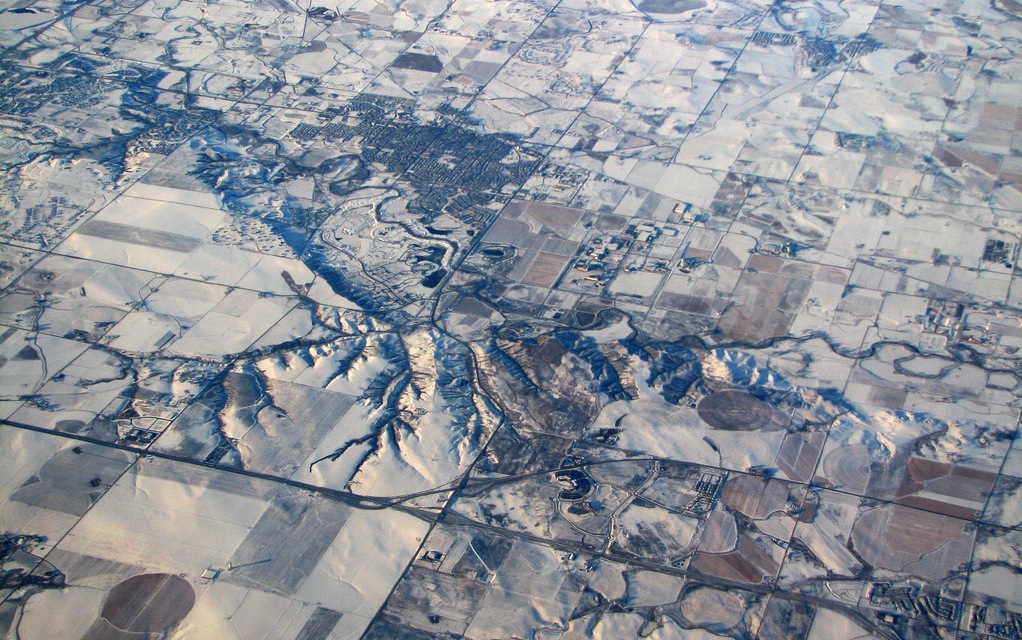
Forty-four years ago—well before the advent of the contemporary mobile phone, Wi-Fi, and social media technology—fabled futurist Alvin Toffler predicted a “historic decline in the significance of place to human life.” He was right, of course. And no country has proven him more right than the United States.
Let’s face it. We are a nation of commitment-phobes, always eager to liberate ourselves from life’s constraints. Unhappy with your family of origin? Form a family of choice. Has your marriage soured over the years? Find someone new! In the 21st century, even an individual’s gender at birth is seen as changeable—and when we talk about sex change, we use the language of liberation: a man trapped in a woman’s body. From where we work to where we live, Americans see change—or is it exchange?—as a birthright.
This culture of impermanence has created what sociologists call “limited liability communities.” Whenever we attach ourselves to, well, anything, we reserve the right to quit when that attachment no longer serves our purposes. That’s what freedom of choice is all about, right?
Yes, but we rarely acknowledge that the flipside of all this freedom is weak attachments to people, groups, and, particularly, to place.
Toffler’s prediction has given way to a lot of contemporary handwringing about “placelessness”—the notion that a monotonous, standardized, and homogeneous American landscape, working in concert with new technologies, has disconnected us from the uniquely rooted locales that once grounded us in community. Not long ago, the National Trust for Historic Preservation launched a national campaign called “This Place Matters” to encourage communities to rally around iconic locales. A growing number of philanthropic foundations are funding a movement called “placemaking,” which emphasizes the role specific public places can play in building strong communities with a healthy sense of belonging.
This loss of a sense of place is generally seen as a modern malaise. We blame corporate chains and big box stores for draining the American landscape of so much authentic local expression. We lament how the Internet and digital technology have undermined the primacy of place. But it seems to me that what we call placelessness today is actually a much older phenomenon that tells us something more fundamental about the American character.
In his classic 1888 book, The American Commonwealth, Lord James Bryce, who would later become British ambassador to the U.S., bemoaned the remarkable uniformity of most American cities. “Some of them are built more with brick than with wood, and others more with wood than with brick,” he wrote. But it wasn’t simply a matter of architecture, he concluded; it was that these cities appeared to have no interest at all in preserving “anything that speaks of the past.”
A century later, essayist and cultural geographer John Brinckerhoff Jackson argued that the “all-pervading sameness” of the American landscape was by and large the product of the Land Ordinance of 1785 and the Northwest Ordinance of 1787, which together established a rectangular survey system designed to transfer public lands to private citizens in the simplest and most equitable way possible. This enormous grid, which you can easily see from the window of a plane as you fly over the country, covers two-thirds of the nation, from Ohio to the Pacific Coast, and from the Rio Grande to the Canadian border.
The standardized system ensured that the organization and planning of cities, towns, and subdivisions would neither be tailored to the natural landscape nor grounded in any specific local cultural tradition.
Sure, over time, parts of the grid developed their own special character. But more than 1 billion acres of interchangeable, rectangular spaces inevitably fostered, according to Jackson, “the temptation to consider all uses as temporary. Space, rather than land, is what the settlers bought, and it was so easy to buy, so easy to sell, that commitment to a specific plan for the future must have been difficult for many.”
An absence of connectedness to place also gave U.S. culture a special sense of physical freedom—along with peculiarly lonely landscapes. Think about it: For all of our sunny-side-of-the-street cheerfulness, there are few more quintessentially American images than a ribbon of highway tapering off into the horizon or an Edward Hopper painting of an isolated figure in an urban landscape.
Humanist geographer Yi-Fu Tuan has written that place gives us security while space promises freedom. Human lives, he says, “are a dialectical movement between shelter and venture, attachment and freedom.”
That rings true, but I can’t help thinking about whether different cultures favor one side of the equation over the other. In the U.S., we have long been clearly biased toward space over place, and so a certain amount of placelessness has been our lot.
This doesn’t at all mean that we shouldn’t make concerted efforts to nurture a sense of place in America. It does suggest, however, that such efforts will be uphill struggles, pushing back against both our history and our grid.




Send A Letter To the Editors